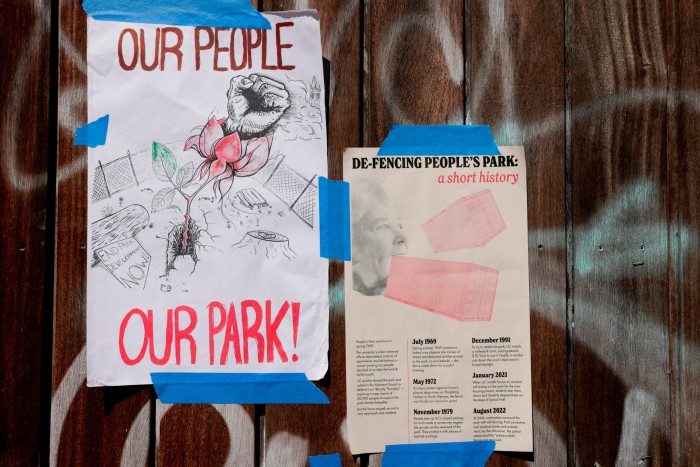
News of the creation of a new school warms all but the hardest of hearts. But it also fills a small minority with apprehension at least, horror and dread at worst. These people are not sociopaths. They are my gentle and sometimes genteel neighbours. They objected, some formally, to it for a very simple reason: it was going to be very close to where we live.
It’s an age-old story. People agree that we need more homes, hospitals, schools, sewage works, wind turbines, solar farms, bypasses, railway lines and countless socially necessary constructions. But they don’t want any of it on their doorstep. No matter how essential something is for society at large, if it seems even remotely problematic for them personally, they will mount the barricades to see it off.
This seemingly reflex repulse response is widely derided as Nimbyism, a word that has become so familiar that it is understood even by those who don’t realise it is an acronym for “not in my back yard”. Yet although everyone mocks the Nimby, when push comes to shove, almost everyone is a Nimby themselves. For example, I was the only person who categorised their response to the planning application for the school as “support”. Eight others voted “oppose” while two were merely “neutral”.
Maybe I live in Nimbyville Central. Still, I suspect that while almost everyone would welcome a new school in their area, very few people welcome one literally next door, unless they were to benefit directly. Just as St Augustine wanted chastity, but not yet, so our collective prayer is: “Lord, give us more infrastructure — but not right here.”
Nimbyism today can all too often be associated with people more likely to oppose immigration and support populist rightwing parties. It could easily be portrayed as part of the “culture wars”: ordinary people with legitimate grievances against enforced change being dismissed as reactionaries by liberal elites.
But there is more to this status quo protectionism than fear and loathing or stuffy conservatism. People have a deep-rooted connection with where they live, to the extent that it becomes part of their identity — and this is something they want to preserve.

Connection to place is a human instinct. The Māori say of the Whanganui, New Zealand’s longest navigable river, Kō au te Āwa, kō te Āwa kō au — I am the river and the river is me. Indeed, strong identification between people and their territory is pretty much universal in traditional societies. Many in industrialised ones quite rightly admire, respect and even envy this sense of belonging. But, although in newer societies the connection to the land is generally weaker, the attachment to place remains strong. Identity is often still tied to where we come from or live. The world is filled with proud Geordies, Romans, Berliners, Kyivans and the like. These bonds are often strongest at the neighbourhood level. So when people oppose developments that will change the character of their communities, their opposition shares the same basic motivation as that of indigenous people: protecting something they love.
Nimbyism is too often reduced to its negative sides: metathesiophobia (fear of change) and xenophobia (fear of strangers). But these fears are arguably the flipsides of what the late conservative philosopher Roger Scruton called “oikophilia”: the love of home. If you love where you live then you will tend to be very wary of anything that will change what you love about it.
This is true even if those changes are in some ways good. For example, after years of adding billions of dollars to the budget for housebuilding in California — where cities such as San Francisco and Los Angeles face both a homelessness crisis and local opposition to new mid-rise or low-cost housing developments — governor Gavin Newsom complained that “Nimbyism is destroying the state”. But for locals, their neighbourhoods and built heritage inspire real love, strong enough to make people fight to stop it from changing.
The Nimby in us all is especially aggrieved when changes feel forced on us. Not only can it feel like a grave injustice, it undermines our sense of agency. While being able to adapt to change is a sign of a healthy mind, feeling that we are in control of our lives is also important for mental wellbeing and so anything that diminishes that is bound to be perceived negatively.
I have experience of feeling such injustice and powerlessness, albeit on a very small scale. Our last home was a small garden flat on a very pleasant north Bristol street. We loved it — until the house next door was converted, without permission, to a nine-bedroom student HMO (house in multiple occupation). When retrospective permission was sought, we were among the strongest objectors, all to no avail.

Of course, students need places to live. But when we bought our flat, living next to them was not part of the deal. (It was for the person who bought it from us, who was made fully aware of who their prospective neighbours were.) For us, although we were never in dispute with the annual churn of students, their idea of “quiet” was certainly not ours and the drip-drip of shouting, slamming doors, music and the occasional late-night parties felt like Chinese water torture. Our immediate environment had been changed without our permission and in order to get something like the one we had back, we had to move.
That’s why I feel some sympathy for my neighbours who had opposed the school development. It had to go somewhere and a relatively privileged area is as able to take on the small burden as anywhere. But it would change an entirely residential area into one where the noise of playing children would become part of the daily background. That’s hardly an awful thing, and the hope and expectation that our neighbourhoods will not change is not a right. Still, you can’t always expect residents to be pleased when faced with things they didn’t sign up to when they chose to move in.
However, no matter how much we can sympathise with the emotions behind Nimbyism, we cannot simply surrender to it. Oikophilia is rooted in our pro-social instincts, our need for belonging. But to be pro-social in a modern, complex society requires us to go beyond emotional attachments and to think about our wider responsibilities to people who are not our literal neighbours. Rich countries need to take in refugees and migrant workers; growing populations need more home building; an ageing population needs more care homes and hospitals. We cannot rely on instinct alone to tell us what is fair and just when it comes to the trade-offs these changes demand.
The problem with Nimbyism is that it forgets that we need to be good citizens as well as good neighbours. But it is not surprising that it is so difficult to be both. Oikophilia comes from the heart; civic duty more often comes from the head.
Governments and local authorities need to understand this if they are to build what is required for the greater good. They have to take love of place seriously and not pretend that a good cost-benefit analysis should be enough to win people over. Change needs to be managed with local authorities so that no one feels the nature of their neighbourhood is under threat.
Development needs to be sensitive to the existing character of an area as well as to its future needs. And people need to feel as though they have some real influence, not that their concerns and objections will just be ignored. If our inner Nimby needs to overcome its instinctive resistance to change, it needs love and understanding, not supercilious condemnation.
A brief history of Nimbyism

Although the term Nimby is a late 20th-century coinage, the instinct is as old as humanity itself. Juvenal complained about the development of the Suburra, Rome’s sprawling home to the city’s underclass. “For what have we ever looked on so wretched or so lonely, that you would not deem it worse to be in constant dread of fires, the perpetual falling-in of houses,” he wrote.
Tacitus was similarly unimpressed when Nero built his oversized mansion, although he thought Nero’s developments were at least better than those that followed Rome’s burning by the Gauls in 390BC, when the city was reconstructed “without any regularity or in any fashion”.
Nimby emerged as an acronym at the end of the 1970s, with its first recorded use in a February 1979 newspaper article in Virginia’s Daily Press. Joseph A Lieberman, a member of the US Atomic Energy Commission, was quoted as saying that “the ‘Nimby’ (not in my backyard) syndrome must be eliminated”.
The Oxford English Dictionary’s first mention is also in relation to hazardous waste disposal, from a November 1980 article in the Christian Science Monitor. The author said “the very thought of having even a secure landfill anywhere near them is anathema to most Americans today” and claimed that this attitude was “referred to in the trade as NIMBY”, suggesting it had already gained currency.
Over time, however, Nimbys became more frequently associated with any kind of development, toxic or not. In the UK, the term was popularised by the secretary of state for the environment Nicholas Ridley, who used it disparagingly to refer to local resistance provoked by the building boom of the late 1980s.
In 1990, inspired by Ridley, the Centre for Policy Studies published a pamphlet on “Nimbyism: the disease and the cure,” and it has been a political issue ever since. Its author could not resist pointing out that no sooner had Ridley moaned about the Nimby tendency than it was revealed he had opposed the building of houses that would have spoiled the view from his Cotswold country home.
The frequency of the words Nimby and Nimbyism in British English texts rose steeply until the early 2000s but curiously then declined almost as precipitously until 2014, when they again started to increase in fashionability.
Continued ambiguity about Nimbyism has been reflected in the UK’s recent general election campaign, when Labour’s plan to defy Nimby councils to build 1.5mn new homes over the party’s first term provoked as much anxiety as admiration. Our love-hate relationship looks set to continue.
Find out about our latest stories first — follow @FTProperty on X or @ft_houseandhome on Instagram